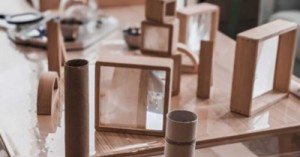Writing observations for babies and young children enables us to observe the countless opportunities for growth and development that take place. The following article provides information on Writing Observations For Babies, What To Observe, Sample Observation For A Baby, Methods For Documenting and more.
Writing Observations For Babies
The primary reason for writing observations in childcare is to help educators understand children in their care better. Babies are heavily dependent on educators for their routines like feeding and toileting; this may leave educators with little time and attention to reflect on children’s actions and experiences as they are happening. Writing the observations down will help educators to go back to those actions and analyse them better to understand the needs, interests, strengths and potential of babies.
Since educators create learning opportunities by challenging and extending a child’s current learning, it is necessary to first gather evidence of the child’s development. Observations enable educators to understand and meaningfully document the knowledge of the child’s current learning so that their development and well-being can be extended appropriately.
One of the most important reasons for writing observations is to make visible to parents the development and well-being of their children. As educators share with parents their children’s special moments, developmental milestones and goals, families not only feel a deep sense of satisfaction but are also supported in continuing their children’s learning in their home environment as well.
Among the most important purposes of writing, observations are to feed such inputs when reflecting upon the service philosophy, program and practices. Going over written observations will help educators to reflect on practices, what has been or has not been working and accordingly plan future activities, environments and challenges.
What To Observe
When parents visit, the first step in acquiring any information to inform planning for babies is to have discussions with them and to ensure that this continues with updated information about their child on a regular basis. After all, who understands their child better than their parents? Once the information from the parents has been acquired, Educators can begin to arrange for the baby's activities and interests.
For example:
Oscar’s mother tells us that he enjoys putting things behind and under the furniture. The Educator needs to stop and think; could this be the sign of an enveloping schema? ‘If so then I need to give Oscar resources such as small bags, boxes, tins with lids, paper or boxes which he can cover in paint and fabrics so that he can envelop himself.’ Once these resources have been added to the environment then the Educator needs to stand back and watch what he does with them.
Simply put, from an observation by a mother, the Educator has made an assessment and has then planned activities for Oscar. As part of this process, she has also planned to observe so that she can see what she needs to do next to challenge his thinking and move his learning forwards.
In any busy baby room, the care needs of the children often impact the time that the Educator has to spend observing the babies and children in care. It is important, therefore, that Educators get the right balance between the routine care needs that they have to cater for and the time that they spend interacting with and observing.
Writing observations will be a meaningful practice only when you know what to watch out for when you are observing. Just writing realms and realms without any idea about the key moments will not only be exhausting and purposeless but might lead you astray in less helpful directions. Here are then some aspects you can include when writing observations for babies:
- Descriptions of actions
- Descriptions of children's vocalizations
- Direct quotes of children's language
- Descriptions of facial expressions and gestures
- Descriptions of creations (e.g., stacked blocks, scribble drawings, finger-painted pictures)
- Something that might be impacting on or delaying their learning and development, like delay in sitting up straight, not responding with interest or vocal cues even when shown rattles and toys which are usually interesting to children of that age.
- Sensory processing red flags like getting easily distracted by noise, light, touch or avoiding busy situations, loud noises and certain textures of foods that may indicate an overstimulated child.
- A growing interest in a certain area like perhaps construction blocks or carrying a tune
- Subtle dietary changes, food refusal or oral aversion issues.
- A change in routines like cutting down from two to one nap over a day and their own reaction to such a change.
- First sounds, words and toddler conversations
- Social play moments and interactions; for example their participation in a one-to-one game or activity with educators or other children, like playing peek-a-boo or a singing game during nappy change.
When writing observations, include those moments which you can contextualise within a larger learning journey or matrix of well-being. Such moments will have causally related ‘before’ and ‘after’ accounts as well as be detailed enough to tell the whole story of what was happening. Here are some tips:
- Avoid writing observations just to cross a few items on a developmental checklist or a series of links to EYLF outcomes or the NQS.
- Observations need to be fleshed out, set in a context and clearly indicated how they would impact future practice.
- Avoid interrupting the experience or child’s work and efforts just so that you can find something to write about. Children not only need physical space but also the focus and psychological freedom to be fully involved in their tasks in order to obtain their true benefits.
- Likewise, being too involved in taking photos or notes will prevent you from being ‘in the moment’ with the child which is crucial to forming trusting relationships. Instead, try to be unobtrusive – you might take a photo here and there to use later but avoid making it your entire focus.
- Avoid expressing your opinion about a child's feelings, objectives, and motives.
- Avoid words that are open to interpretation and uncertain
- Describe a viewpoint.
Sample Observation For A Baby
To be valuable and meaningful, written observations on babies should be truthful and objective. This indicates that educators should only write what they see and hear. For example (8-month-old baby):
Ob 1: 11/29, 8 a.m., arrival
Umar has a hard time when his mum brings him into the room. He doesn't like being put down on the floor. Ignores her when she tries to read a book to him. Crawls over to Lettie takes the ball from her hands; gets upset when mom kisses him, says goodbye, and leaves the room.
Ob 2: 11/29, 8 a.m., arrival
Umar's mom carries him into the room and sets him down on the floor next to the book bin. Umar makes whimpering sounds (no tears). Mom sits down next to him, picks a book from the bin, shows the cover to Umar, and begins to read. Umar turns his head away, sees Lettie (child) holding and shaking a ball with a bell inside, holds his arms out to her, crawls over and sits next to her, takes the ball from her hands, and shakes it. Mom goes to Umar, kisses him, says goodbye, and walks out. Umar starts to cry (tears).
Both observation notes describe how Umar separates from his mother, but the first note contains the teacher's assumptions about and interpretations of Umar's behaviour. Someone reading this note may have different ideas about what happened because words such as "hard time," "don't like," "ignores," and "gets upset" are open to interpretation. The second note describes rather than interprets Umar's behaviours. It provides a much clearer picture of what Umar actually does and says during the arrival routine.
"Am I characterising this child's activities and interactions in the same or comparable way that someone else witnessing this child would describe them?" is one way for Educators to consider their objectivity.
Methods for Observation Recording and Assessment
- Sticky note jottings – Keep a pad of sticky notes close by so that you can quickly jot down a few points and then stick them straight away into your daily diary or onto a form. Apart from being handy, they are unobtrusive so that babies or toddlers can continue doing what they were, doing without getting distracted by the documentation.
- Parent Communication Methods – you can document information from inputs that families may include in parent forms, parent communication booklets, photo collages or information saved to a family’s folder in the service.
- Shared communication platforms – While the previous method allows parents to give their inputs through dedicated modes, you can also have collaborative spaces to share observations about a child. For example, care service programs put up on walls may have a space for parent input or digital document sharing systems like Appsessment can be used both by educators and parents to write notes about the child’s current interests and learning.
- Anecdotal records – These are usually short and simple accounts of the play and actions observed but are written in the past tense. Educators can again use their sticky note jottings to fully flesh out a child’s action from the point they began observing the experience to the end of that particular event.
- Running Records – in contrast to the former format, a running record is written in the present tense and is usually more detailed as well, including information about the event as it unfolded. Educators can use running records to jot down an emerging interest, evidence of a developmental skill or stage achieved – anything that they feel is important to note. If using running records to document, be sure to include the date, time and location.
- Developmental checklists - These are made up of some common milestone targets that are often reached by children within predictable age ranges. As such, they can make up valuable sources of information regarding a child’s progress against the common developmental milestones. However, since all children develop differently and reach milestones on their own timeline, it is crucial for educators to use developmental checklists as one tool among many besides drawing upon their professional training and personal knowledge of the child to decide what such information collected tells about the child as a whole.
- Work Samples – You can include mark making, drawings, construction and crafts to document observations of babies and toddlers in your care. As you collect evidence of their work, also add a short text description of what you saw occurring – for example, the toddler switching hands during mark-making or the exact words/sound that accompanied a peer art activity. Later such descriptions can help you to link to relevant learning outcomes and milestones.
- Photos - are among the most popular documentation forms since they capture fleeting expressions and ongoing actions in a visual way. Also, evidence of group projects and messy play can become unwieldy to store but their photos can be kept for documentation. Indeed photo narratives that document a longer learning project say as growing peas or composting can be a great way for children to reflect on their own experiences and for parents to share in their children’s achievements. But since digital technologies have made it easy to click and save photos, there is often a danger of putting quantity ahead of quality. The ultimate purpose of including photos in documentation should be to make visible significant moments in the children’s learning journey. For example, a photograph of a child learning to tie shoelaces should be of the hands at work rather than the whole child striking a pose or the surrounding classroom. Like in the former method, photos and photo narratives are best used when accompanied by meaningful captions or short descriptions of the significance of the moment or experience captured.
- Learning stories – this is one of the most elaborate forms of documentation that include detailed text descriptions accompanied by photos to tell a story. The narrative includes not just the child’s experience and the moment of discovery but also the educator’s input and analysis of the learning that has taken place. This is also a useful documentation method for parents as it might be easier for them to share information about their child with the help of stories rather than in a professional format.
Like other types of documentation, writing observations should reflect the needs and abilities of children of that particular care setting rather than merely checking regulatory boxes. Also, it makes sense to explore different types of observation methods for gathering and collecting learning evidence over time and in a range of situations. Above all, like other types of documentation, writing observations should lead educators to analyse evidence and reflect on how to use it to improve programs and practices.
Once all the observations are complete, Educators should be identifying the next steps for learning, which should then be used to inform their planning. When it comes to planning for babies, using individual planning identifies ways in which the Educator can work with that particular baby within the continuous provision of the environment. When babies are young it is difficult to plan for group activities because their stages of development at the same chronological age can be so different, especially with regard to mobility and physical development.
When observing babies it should be about you as an Educator knowing the children in your care and giving them all the opportunity to progress – and, most importantly building a partnership between home and care.
References:
Purposeful and Meaningful Photo Observations, Early Childhood Australia
Writing Observations For Baby and Toddlers, Empowered Educator
How to Observe and Assess Babies in Nursery Settings, Teach Early Years







 Here is the list of the EYLF Learning Outcomes that you can use as a guide or reference for your documentation and planning. The EYLF
Here is the list of the EYLF Learning Outcomes that you can use as a guide or reference for your documentation and planning. The EYLF The EYLF is a guide which consists of Principles, Practices and 5 main Learning Outcomes along with each of their sub outcomes, based on identity,
The EYLF is a guide which consists of Principles, Practices and 5 main Learning Outcomes along with each of their sub outcomes, based on identity, This is a guide on How to Write a Learning Story. It provides information on What Is A Learning Story, Writing A Learning Story, Sample
This is a guide on How to Write a Learning Story. It provides information on What Is A Learning Story, Writing A Learning Story, Sample One of the most important types of documentation methods that educators needs to be familiar with are “observations”. Observations are crucial for all early childhood
One of the most important types of documentation methods that educators needs to be familiar with are “observations”. Observations are crucial for all early childhood To support children achieve learning outcomes from the EYLF Framework, the following list gives educators examples of how to promote children's learning in each individual
To support children achieve learning outcomes from the EYLF Framework, the following list gives educators examples of how to promote children's learning in each individual Reflective practice is learning from everyday situations and issues and concerns that arise which form part of our daily routine while working in an early
Reflective practice is learning from everyday situations and issues and concerns that arise which form part of our daily routine while working in an early Within Australia, Programming and Planning is reflected and supported by the Early Years Learning Framework. Educators within early childhood settings, use the EYLF to guide
Within Australia, Programming and Planning is reflected and supported by the Early Years Learning Framework. Educators within early childhood settings, use the EYLF to guide When observing children, it's important that we use a range of different observation methods from running records, learning stories to photographs and work samples. Using
When observing children, it's important that we use a range of different observation methods from running records, learning stories to photographs and work samples. Using This is a guide for educators on what to observe under each sub learning outcome from the EYLF Framework, when a child is engaged in
This is a guide for educators on what to observe under each sub learning outcome from the EYLF Framework, when a child is engaged in The Early Years Learning Framework describes the curriculum as “all the interactions, experiences, activities, routines and events, planned and unplanned, that occur in an environment
The Early Years Learning Framework describes the curriculum as “all the interactions, experiences, activities, routines and events, planned and unplanned, that occur in an environment


